Madness in Art: A Powerful Connection
Madness and art have long shared a profound and powerful connection, where the boundaries between genius and instability often blur. Many acclaimed...
Maya M. Tola 28 October 2024
As the heatwave rolls across Europe, it is certainly becoming too hot to move. And when we’re not moving, nothing is more pleasant than to lie down. So, limit all your activity, lie down comfortably and take a look at how lying down in the heat has been immortalized in art.
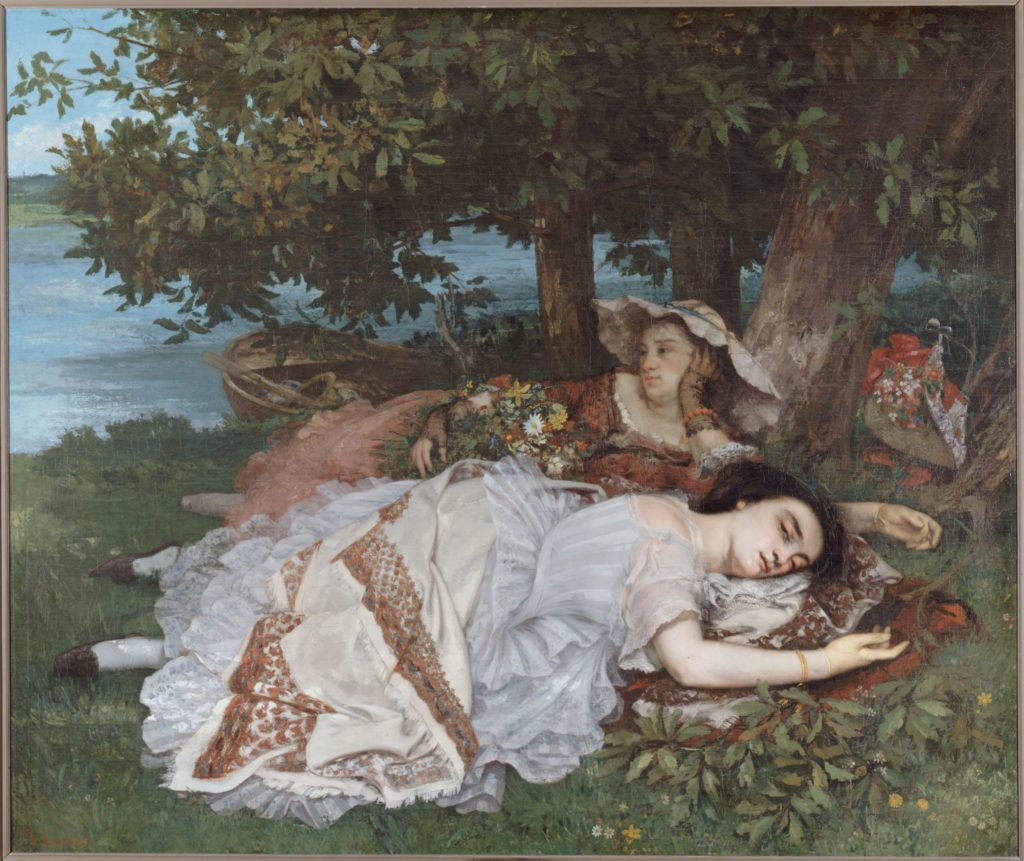
For me, this is the perfect heatwave painting, the exhaustion, the laziness, the unwillingness to move… The painting, when exhibited at the Salon, provoked a scandal caused mainly by the choice of subject. Courbet undermined the traditionally accepted portrayal of women within a natural setting by the obvious and deliberate modernity of his city girls. We can see the undergarments of the girl in the front, and she is also peeking at the viewer knowingly and seductively. This, combined with an extremely sensual painting style that makes us almost feel the heat and the weight of the woman’s hands resting on the ground, creates a sexually charged atmosphere. More than if the women were depicted in a traditionally accepted nude. It is the subversiveness of the image that caused so much uproar.
Putting the scandal aside, the painting transports us to the shady bank of a river, where we can get respite from the heatwave, feel the gentle breeze, and relax. It also allows us to see the world from a different perspective: Watching people as one is lying down changes the way we perceive them.
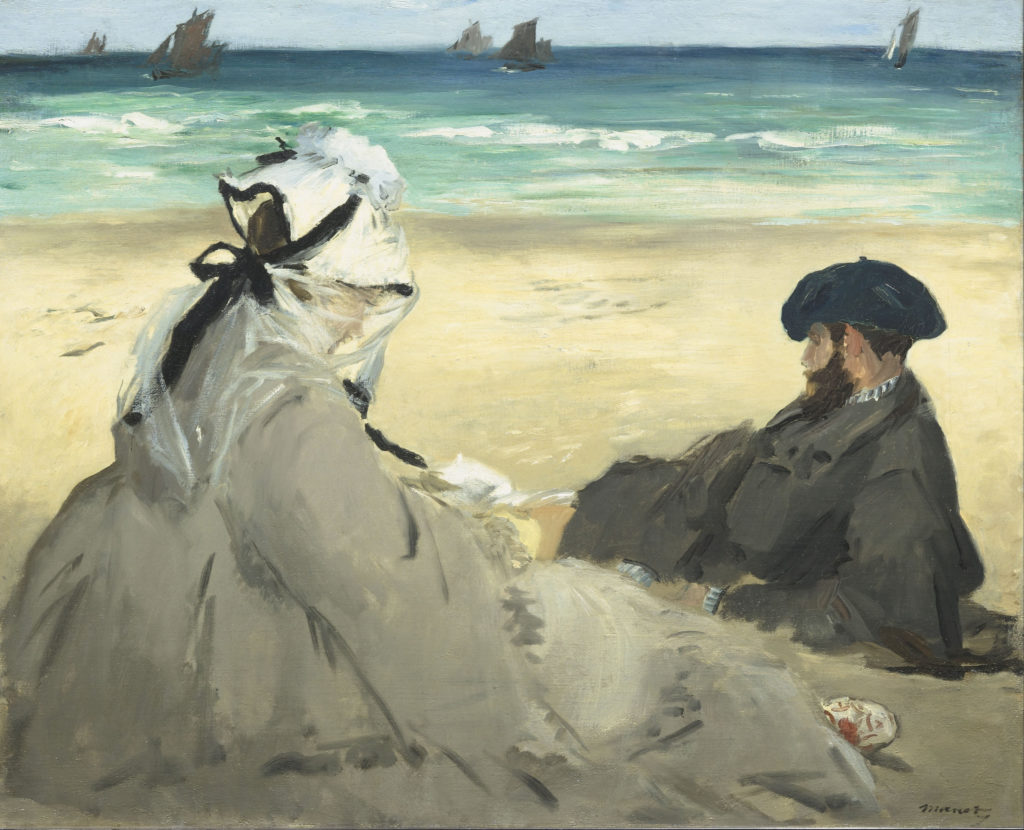
Compared to Courbet’s pair, the one painted by Edouard Manet seems a bit overdressed. Manet painted this work during his vacation in Berck-sur-Mer, France in 1873. Here, his wife and his brother pose for him; apparently, there are grains of sand mixed in with the paint, proving that the work was created in situ. The scene is one of extreme calm but is made lively by the energetic brushstrokes that Manet used to capture the moment.
One tip we definitely should take from this painting is to protect ourselves from the sun. It can be lovely, especially after a long winter, but during a heatwave, it can be deadly. Cover yourselves and drink water… and if possible, stay close to water, as you’ll have a better chance to catch the breeze!
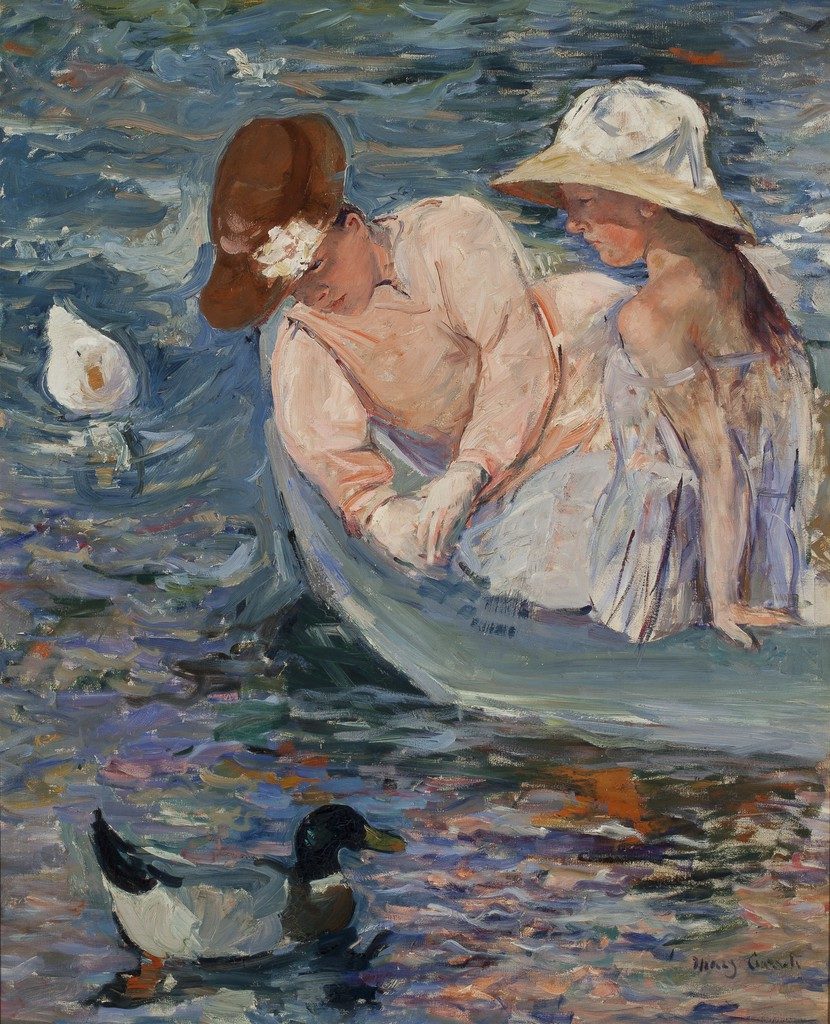
In 1894, Mary Cassatt finally became a homeowner, buying Château de Beaufresne in Mesnil-Théribus, in the countryside 50 miles northwest of Paris. She achieved recognition in both Europe and the United States during her career and was the only American to exhibit with the French Impressionists. Since 1890, she focused mostly on printmaking and the mural for Woman’s Building at the World’s Columbian Exposition in Chicago. This painting marks her return to easel painting.
Again, we can see a good level of sun protection, absolutely crucial in a heatwave. Sadly, hats are no longer as popular as back in the 19th century. Another good idea that this work gives us is to not only stay close to the water but actually get on the water. This way, we can enjoy the breeze fully and cool down by dipping our hands or legs in the water. If you swim well, surely, you’ll also be tempted to just plunge in to cool down.
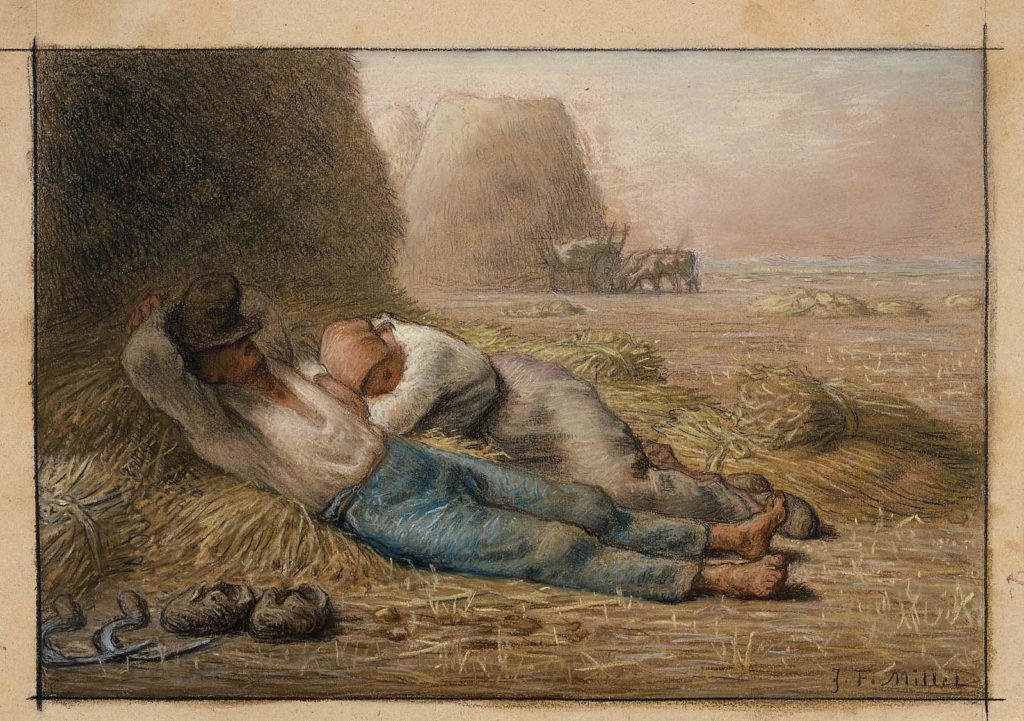
Jean-François Millet was born into a prosperous peasant family and enjoyed a good education before being apprenticed to a painter in Cherbourg, France in 1833. In 1837, he was sent to Paris and became the pupil of the famous historical painter Paul Delaroche. He was not satisfied with Academic painting, so he developed his own style, focusing on countryside scenes and rural laborers. He is considered one of the founders of the Barbizon School. The group focused on drawing inspiration directly from nature, and Millet extended this approach from landscape to figures. His art in that period revolved around scenes of peasant life and work in the fields.
This pastel is part of a collection of works commissioned by Emile Gavet. They were commissioned gradually, but the collection grew to include 90 works. Millet manages to pull off a balancing act, on the one hand idealizing the view of a peasant’s life, while on the other clearly showing the extreme exhaustion of work in the fields in the scorching heat of summer. His figures look for even the smallest respite in the shade, covering their faces and heavy with fatigue.
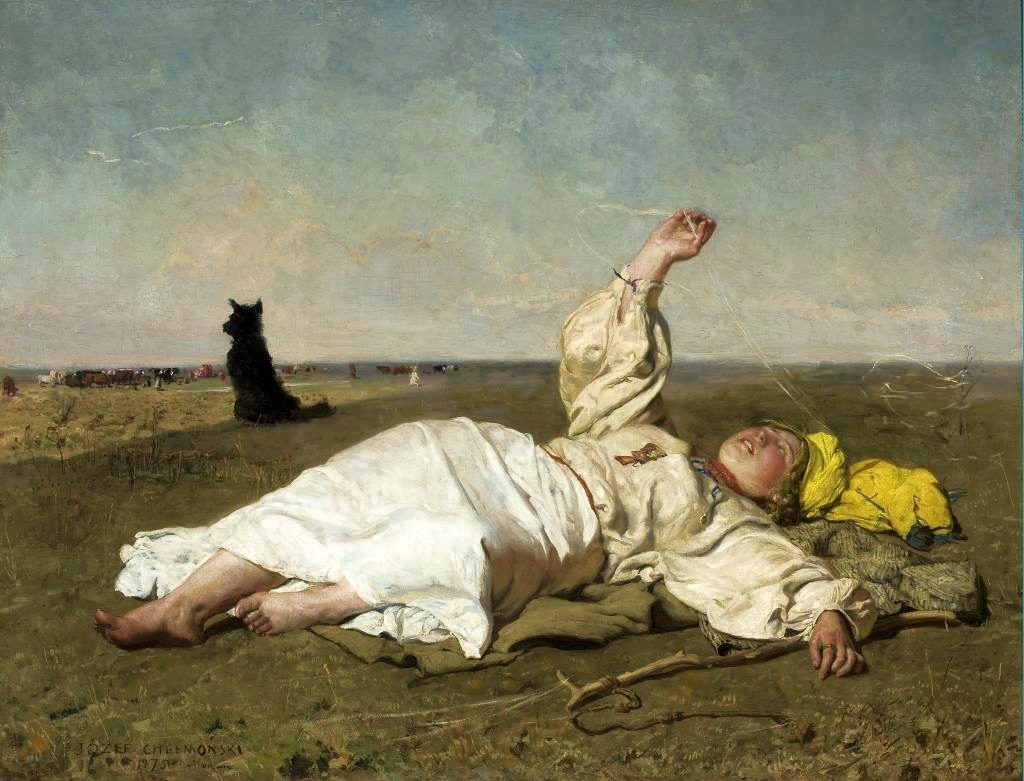
Józef Chełmoński was a Polish painter of the Realist school. This is another one of those paintings that caused an uproar when first exhibited. The public was indignant that such a painting was shown in an official exhibition, a simple woman with dirty feet (!) was not considered a worthy topic. As we know, tastes change and it is now one of the most commonly reproduced paintings in Poland.
Just look at this girl. Resting, stretched, fully in the moment, fascinated by the web of Indian summer in her hand. Not thinking about the past or future, just enjoying the moment of relaxing. Leaving her worries to the guard dog in the background. As a heatwave is not a good time for physical activity, it may be a good time to meditate, or if you’re not into mindfulness, to just enjoy the dolce far niente. You don’t have to work in the fields to deserve one!
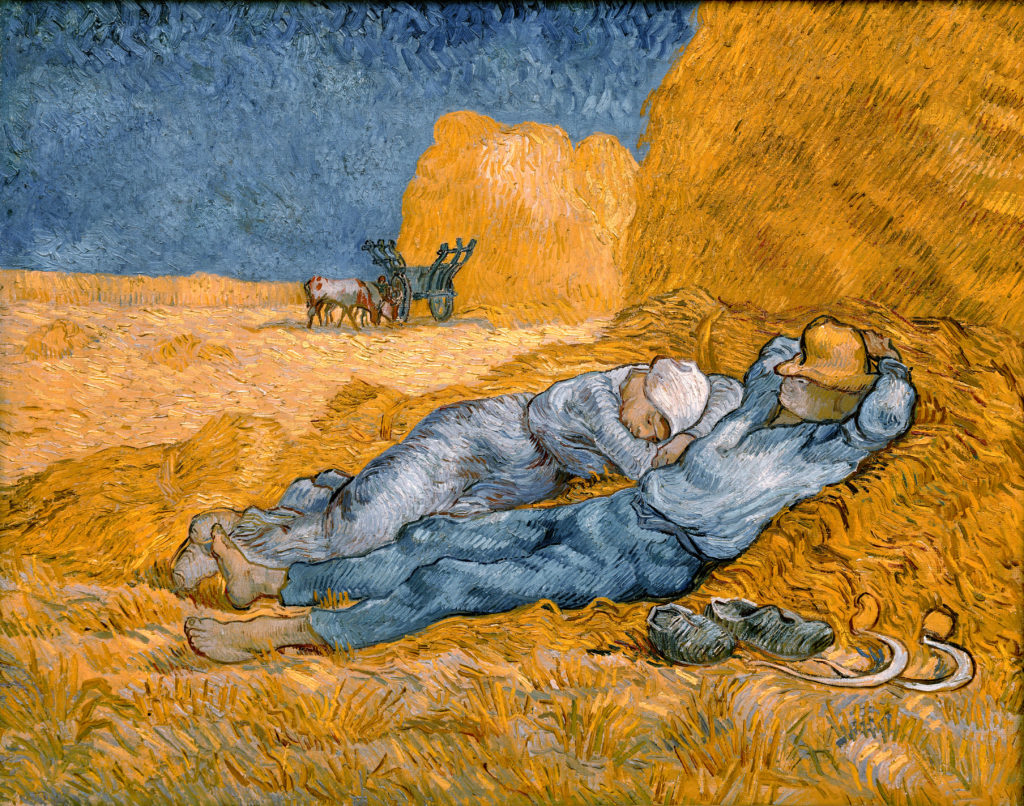
During his time in Saint-Paul asylum in Saint-Rémy-de-Provence, Vincent van Gogh struggled to find topics for his paintings, especially in the winter. To solve this problem, he took up copying the works of other artists, such as Eugene Delacroix, Honoré Daumier, and Rembrandt. Around 20 of these copies are of Millet’s works. As you can see, Van Gogh was not interested in simple imitation. He infused the paintings with his style and interpreted them into his language.
As in Millet’s pastel, the figures are exhausted, but here I sense also a tinge of satisfaction with work well done. Especially in the man, with his arms confidently behind his head, pushing his hat to his face, almost missing a blade of grass in his lips. The one thing we can all learn from these paintings is that rest is our right and we should enjoy it, not feel guilty about it. When you decide to rest, just consciously put other things to the side. They will be there when you’re back.
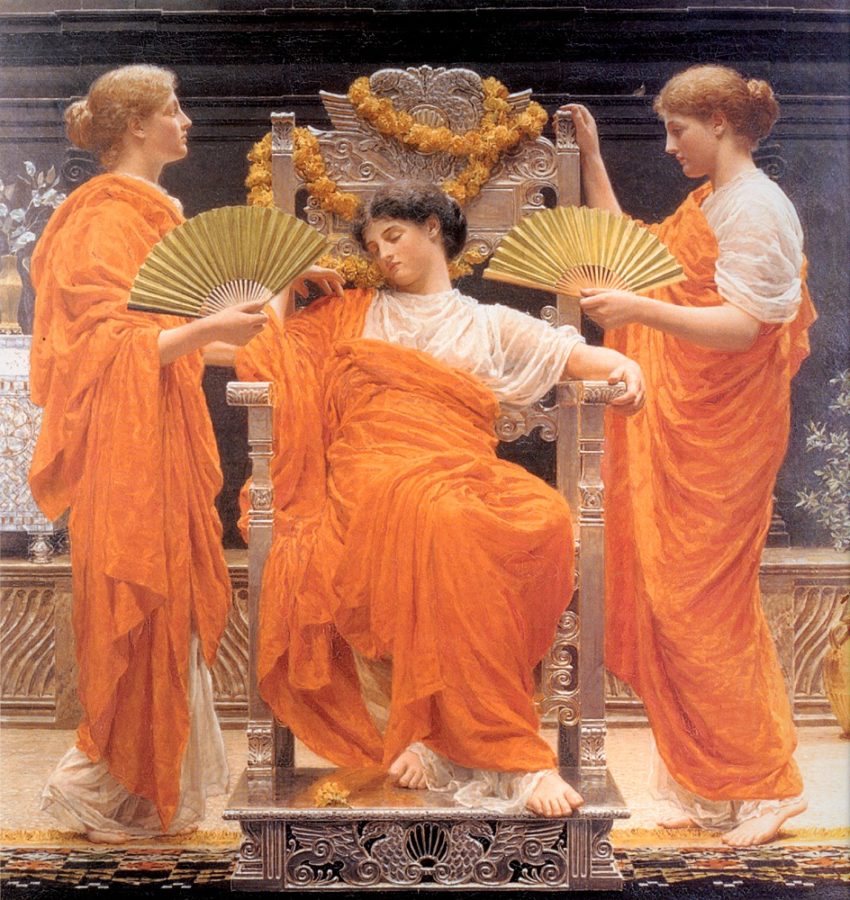
Albert Moore “was an English painter, known for his depictions of languorous female figures set against the luxury and decadence of the classical world”. This quote neatly sums up Moore’s work. Of course, there was more to his work than just languorous female figures, but let’s face the facts: This is what he’s known for. He was the son of a well-known portrait painter and two of his 14 siblings were also painters: Henry Moore and John Collingham. His early works showed the influence of Ruskin and the Pre-Raphaelites, visible in his paintings of a woodcock and a goldfinch, the first works he exhibited in the Royal Academy in 1857. Later in his career, he became fascinated with Neoclassicism and studied the Elgin Marbles extensively. He became influenced by the Aesthetic movement and its principles.
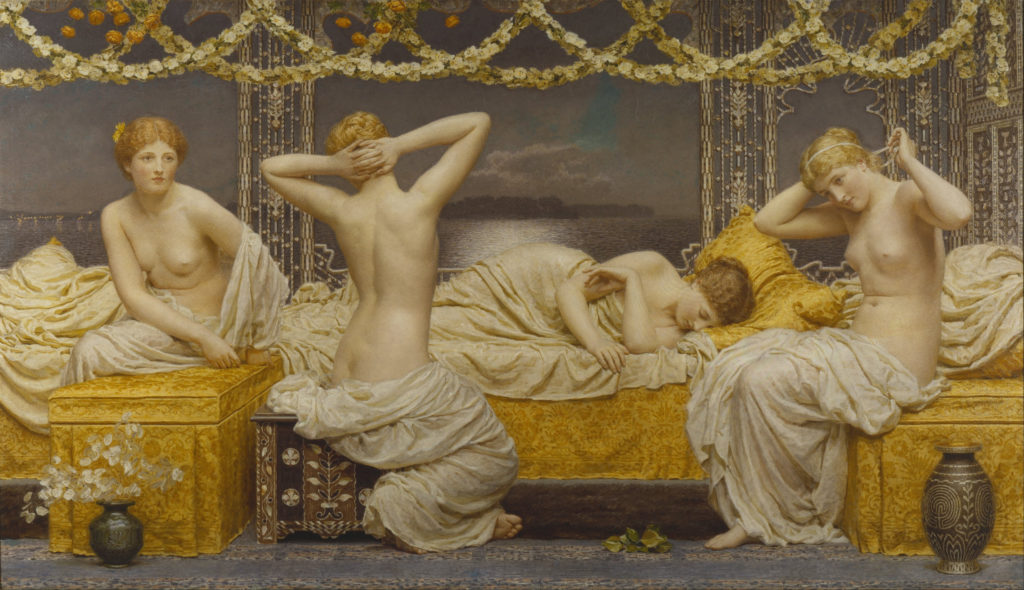
Despite his paintings being extremely balanced and calm, it seems Moore himself had quite a personality. The Royal Academy considered his art too progressive and himself as too outspoken and not reverent enough. Because of that, they actively worked to keep him out of the Royal Academy.
The middle of the summer, during a heatwave, is probably not the best time to argue with others. Make sure you have an electric fan close by (unless someone loves you very much and is willing to help you with a hand fan), have a good long stretch, and enjoy not moving more than absolutely necessary. Stay hydrated!
DailyArt Magazine needs your support. Every contribution, however big or small, is very valuable for our future. Thanks to it, we will be able to sustain and grow the Magazine. Thank you for your help!